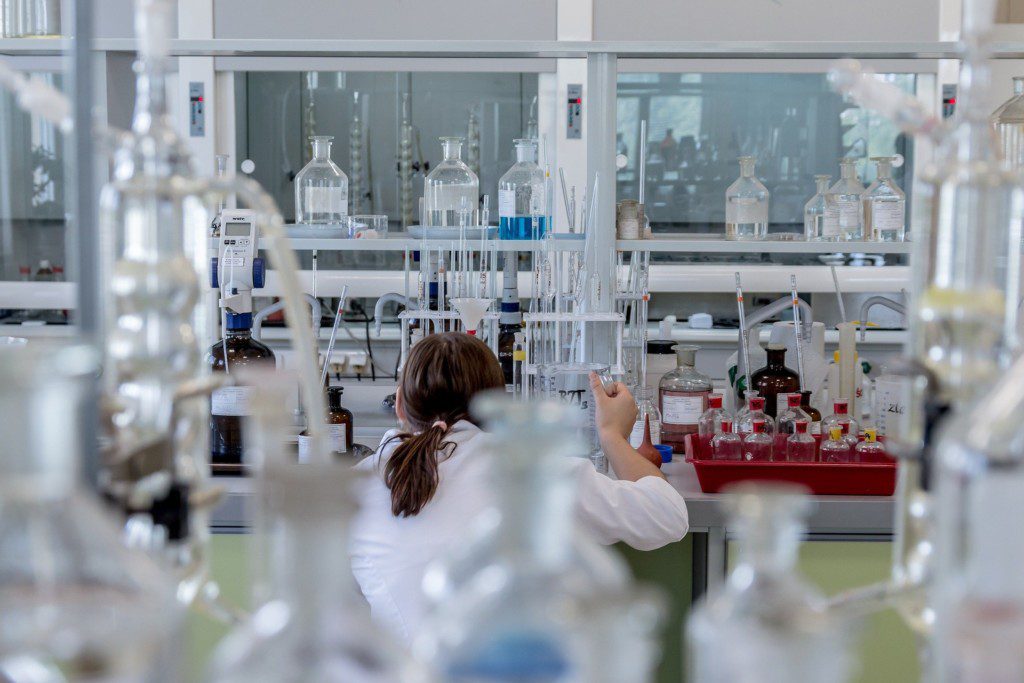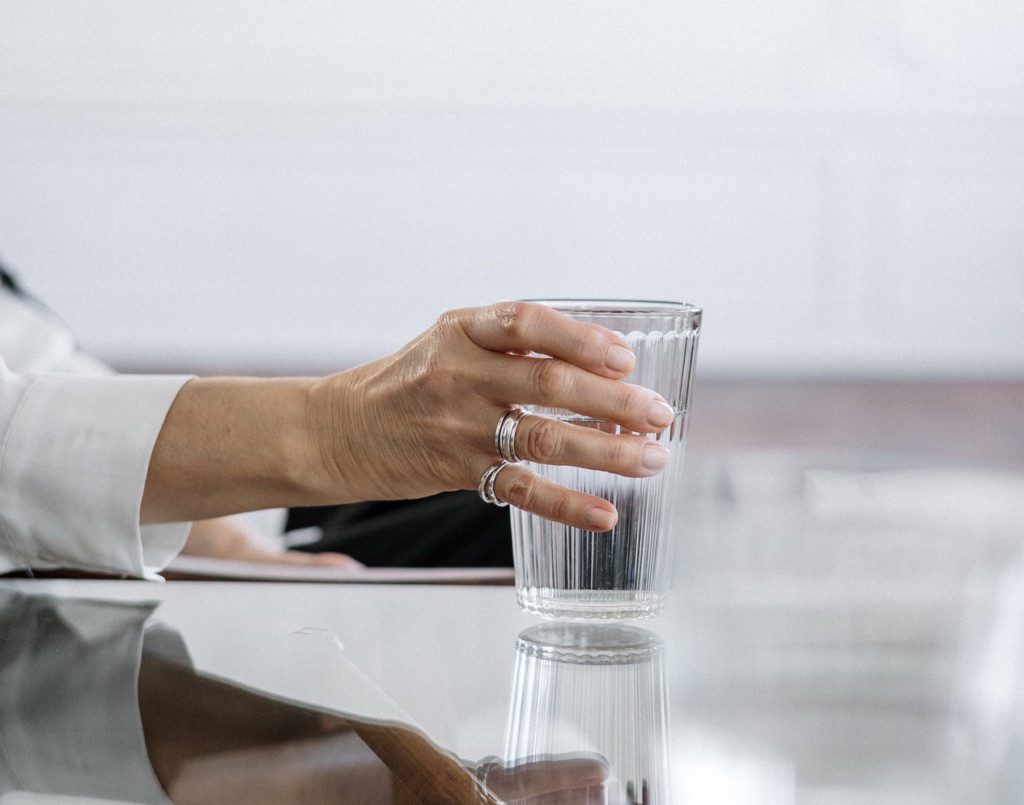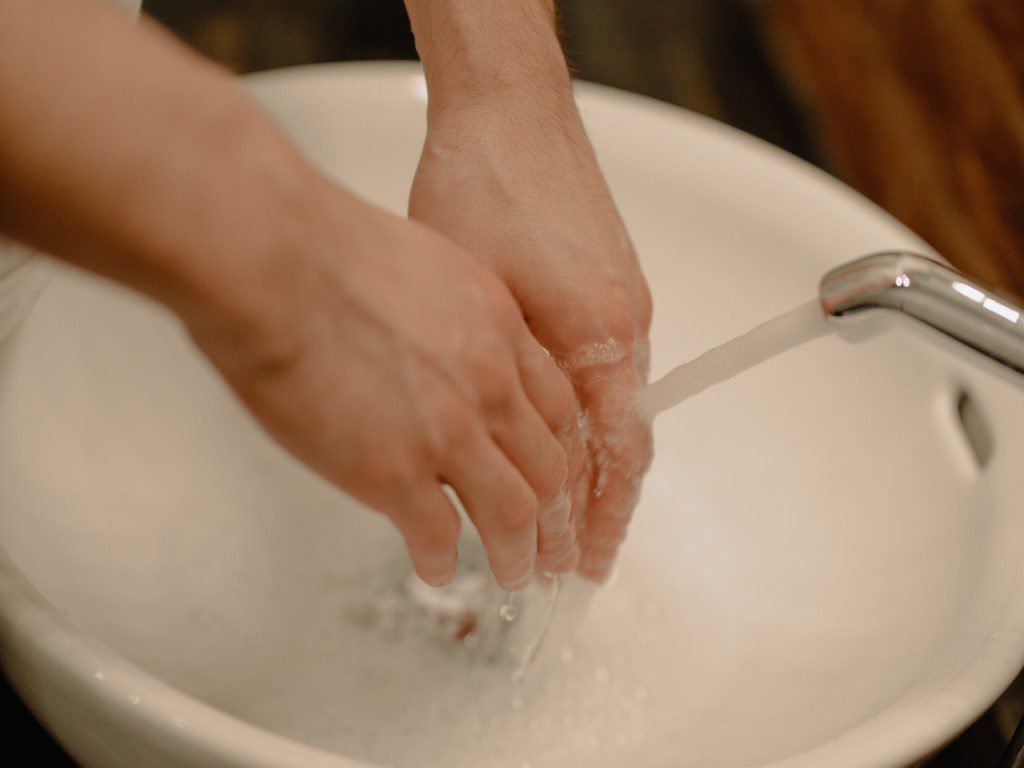Keep in mind that high resistivity equates to cleaner and purer water. The measurement of resistivity is displayed as ohms. The ohms law says that the current that goes through the conductor between two separate points is proportional to to the voltage that occurs across the two points. Materials that are able to conduct electrical currents have low resistivity and are considered to be conductors. Materials with a high resistivity are known as insulators. As salts dissolve in water, free ions develop. Free ions can conduct electrical currents. This guide takes a look at resistivity and how it applies to the quality of water.
Key Takeaways:
- Resistivity of water refers to the ability that the water has to resist an electrical current which is determined by the concentration of dissolved salts in the water.
- When comparing conductivity to resistivity, conductivity is the measurement of how well the electricity if able to flow through the water.
- Using a resistivity meter for water testing can be important because it can help determine if there are any dissolved salts or other contaminants in the water.
The Correlation Between Resistivity and Conductivity
 When measuring water, it’s possible to measure the total conductivity of water, which refers to the ability for an electrical current to pass through water. Since dissolved salts are able to conduct an electrical current, an increase in salinity results in an increase of conductivity. Another factor that can alter the conductivity of water is temperature. A higher temperature usually results in higher conductivity readings.
When measuring water, it’s possible to measure the total conductivity of water, which refers to the ability for an electrical current to pass through water. Since dissolved salts are able to conduct an electrical current, an increase in salinity results in an increase of conductivity. Another factor that can alter the conductivity of water is temperature. A higher temperature usually results in higher conductivity readings.
There is a strong correlation between resistivity and conductivity. While conductivity measures how well electricity is able to flow through water, resistivity measures how much water can resist the flow of electricity. Because of how these two measurements correlate, both of them are typically included in water-purification systems that are used in laboratories.
What is the Resistivity Formula / Equation?
The total resistivity of water or any other material is measured with a simple formula and equation, which reads ρ= E over J.
- ρ symbol refers to the overall resistivity of the water in ohm meters.
- E represents the magnitude of an electric field in volts per meter
- J represents the magnitude of density in amperes per square meter
This formula is important because it allows you to identify the electrical resistivity of water by using a mathematical formula. With this formula in hand, you will better understand resistivity readings when you take measurements of the water.
Why Use a Resistivity Meter for Water Testing?
 While conductivity meters can be effective when testing the quality of water, resistivity meters are also reliable tools for water testing. For instance, ultra pure water has an exceedingly high resistivity reading of 20-million ohms, which essentially means that there are no dissolved solids or contaminants in the water. With this reading, you can be confident that the water is pure and safe to drink. While filtered water isn’t 100 percent free from impurities, you should still receive a resistivity reading that registers at 500,000 ohms.
While conductivity meters can be effective when testing the quality of water, resistivity meters are also reliable tools for water testing. For instance, ultra pure water has an exceedingly high resistivity reading of 20-million ohms, which essentially means that there are no dissolved solids or contaminants in the water. With this reading, you can be confident that the water is pure and safe to drink. While filtered water isn’t 100 percent free from impurities, you should still receive a resistivity reading that registers at 500,000 ohms.
When the water hasn’t been filtered in any way, the resistivity readings will quickly drop off. Rain water typically has a resistivity reading at around 20,000 ohms, which is far higher than the 1,000-5,000 readings found in unfiltered tap water. If you use a resistivity meter to test brackish water in rivers, you should expect to be given a resistivity reading of around 200. For coastal seawater and open seawater, the resistivity readings tend to range from 20-30 ohms.
Unless you’re testing ultra pure water, the types of dissolved solids that can be found in the water include sodium, calcium, potassium, magnesium, and chloride. When too much of these solids dissolve in the water, the quality of the water will diminish, which can make it unsafe to drink. The reason why resistivity meters have become increasingly important is because they are able to provide accurate readings of ultra pure water for applications where this type of water is required. For instance, many industrial and laboratory process require ultra pure water. If even a small amount of dissolved solids get into the water, it becomes useless.
When in the field, resistivity sensors can be used to determine the overall quality of water alongside pH and dissolved oxygen sensors. The types of field applications that resistivity sensors are ideal for include testing groundwater, checking contamination in landfill leachate, and investigating possible contamination in rivers and lakes. Anyone who monitors the resistivity of water on a regular basis should quickly gain an understanding of normal resistivity levels in different bodies of water. With this knowledge, you can identify abnormal readings that could indicate the presence of a new pollutant in the water.
Water resistivity is also highly important when looking at aquatic ecosystems. Every organism in rivers, lakes, and oceans requires a certain resistivity level to thrive and survive. If these levels go beyond a certain range, the aquatic life within an ecosystem may not be able to survive. Resistivity meters aren’t only used for the measurement of resistivity in water. In fact, the top resistivity meters are able to measure ohm levels within fluids, slurries, and semi-solids. As such, resistivity meters have proven to be effective when used across a wide range of different industries, which include everything from construction to archeology.
With archeologists, resistivity meters are mainly used to properly test electrical circuits. These meters are inserted directly into the ground to obtain the appropriate reading. Different readings can indicate the presence of archeological features underground. If the resistivity readings in a specific area are lower or higher than their surroundings, archeologists can gain a better understanding of which features could be located below the ground. For instance, a stone structure could block the flow of electricity, which would result in lower resistivity readings than normal.
Why Do We Measure Resistivity Rather than Resistance?
 While some people use resistance and resistivity interchangeably, these terms have slightly different meanings, which you should be aware of before performing any measurements. The resistance of water or any other material is based on numerous factors, the primary of which is the resistivity of the material in question. By understanding the difference between these two terms, you should have a better idea of how electrons flow. The resistance of a device or material refers to the quotient for the voltage when applied directly to a circuit. This is then divided by the ensuing current through the circuit.
While some people use resistance and resistivity interchangeably, these terms have slightly different meanings, which you should be aware of before performing any measurements. The resistance of water or any other material is based on numerous factors, the primary of which is the resistivity of the material in question. By understanding the difference between these two terms, you should have a better idea of how electrons flow. The resistance of a device or material refers to the quotient for the voltage when applied directly to a circuit. This is then divided by the ensuing current through the circuit.
Resistance of a material centers around the capacity that the material has to block the flow of the current, which is displayed as ohms. On the other hand, resistivity is an actual measurement of the material’s resistance. When materials are resistant to electrical currents, they are known as insulators. Materials that have low resistance are referred to as conductors, which means that they can conduct electrical currents without issue. Along with insulators and conductors, it’s possible for a material or element to be classified as a semi-insulator.
There are a range of factors that can alter resistivity readings, the primary of which include the thickness and size of the material that’s being measured. Additional factors include electrification time, humidity, and current temperature. When every other factor remains the same, wider materials will typically have less resistance than smaller materials. On the other hand, lengthier materials have greater resistance than shorter materials. While resistance depends on the size of the material, it’s important to understand that resistivity doesn’t.
There are a range of resistivity measurements that can be taken, the most common of which include:
- Surface resistivity
- Contact resistivity
- Volume or bulk resistivity
Surface resistivity refers to measuring the resistance of a material’s surface when in contact with electrodes, which makes this a very straightforward measurement. In comparison, contact resistivity involves measuring the resistance through a composite or material. It’s important to understand that contact resistivity measurements don’t obtain readings on the resistivity of the given material. Instead, they measure the overall quality of an electrical connection.
The other type of resistivity measurement that you can conduct is volume or bulk resistivity, which involves measuring the resistance of a material multiplied by its cross-section. The cross-section is the thickness and width of the material. This reading is then divided by the length of the given material that rests between the electrodes.
Resistivity is a highly important measurement that can provide you with precise data on the quality of a water sample. Whether you’re testing drinking water or want to make sure that river water hasn’t been too polluted, resistivity measurements can be performed for many different applications. In fact, these measurements are essential for certain industrial processes. While the science behind resistivity can be difficult to understand, resistivity meters are easy to use and can give you the answers you’re looking for.





